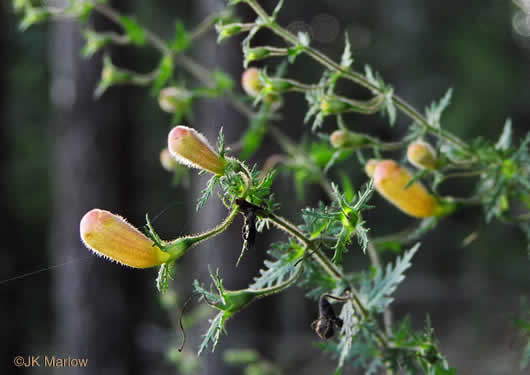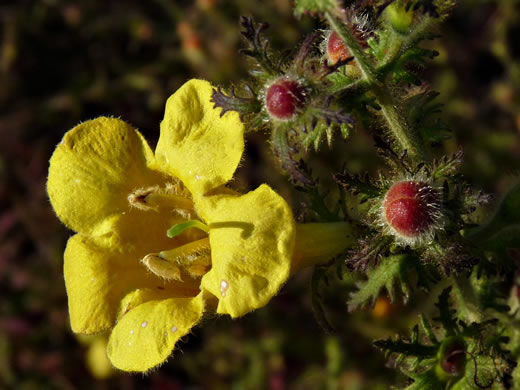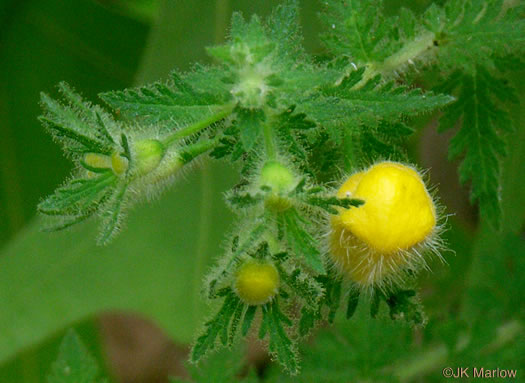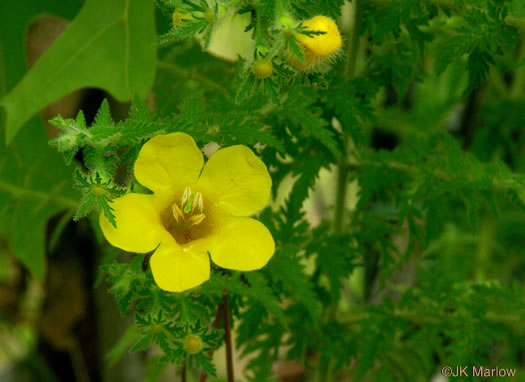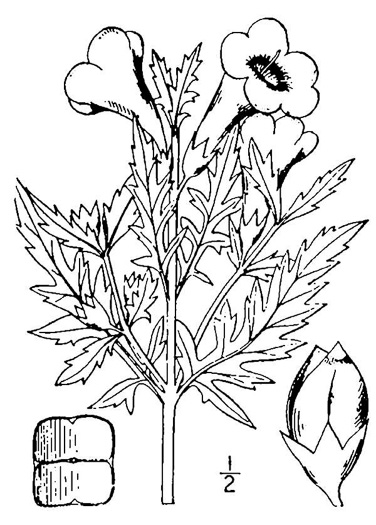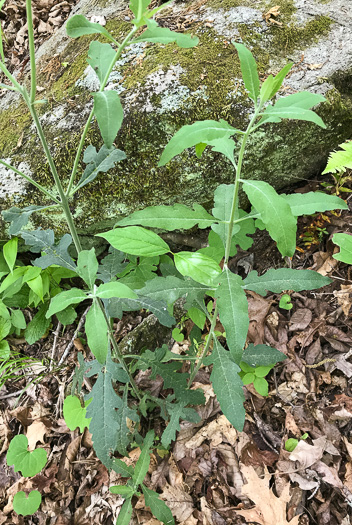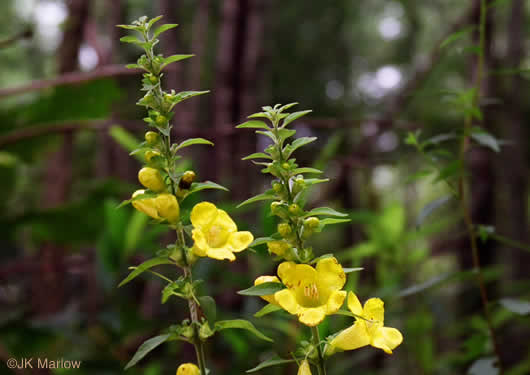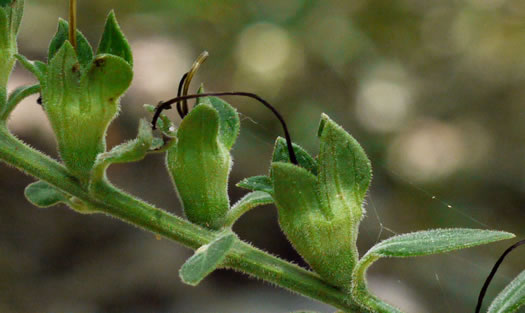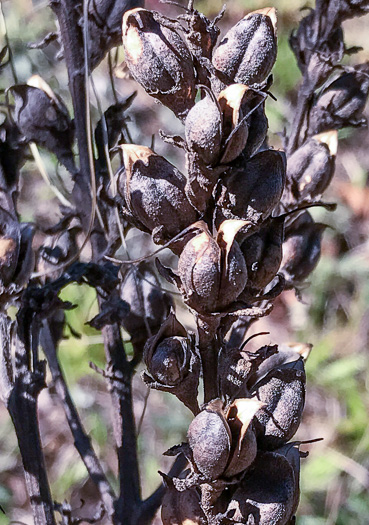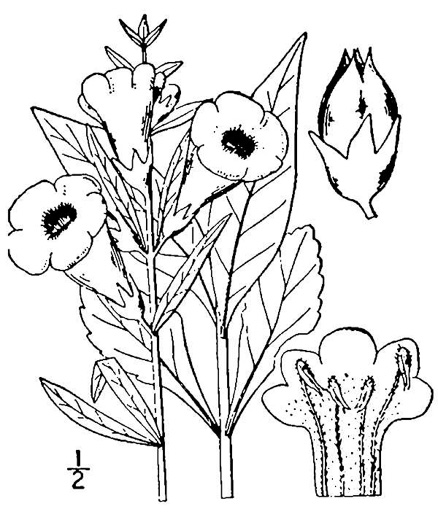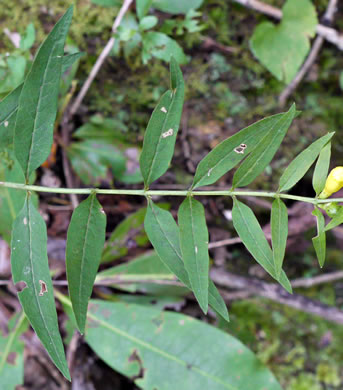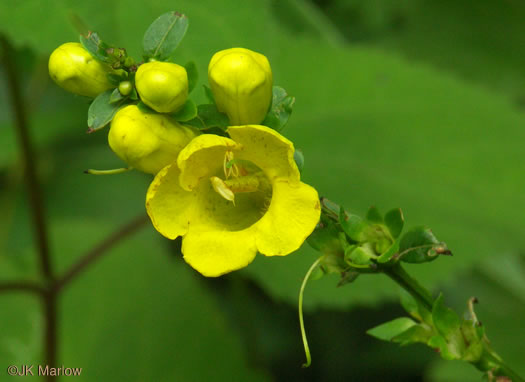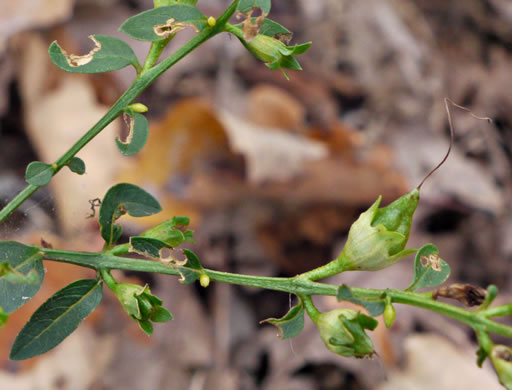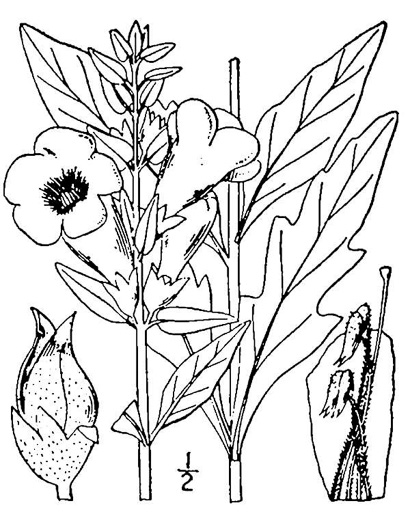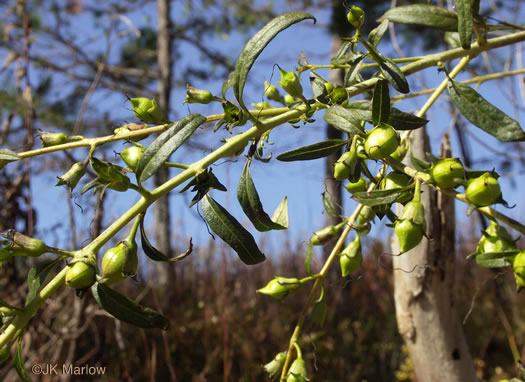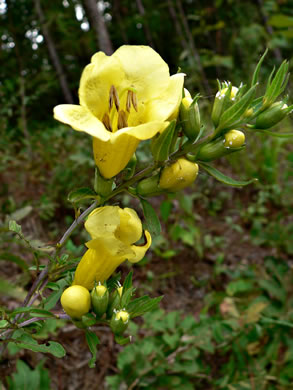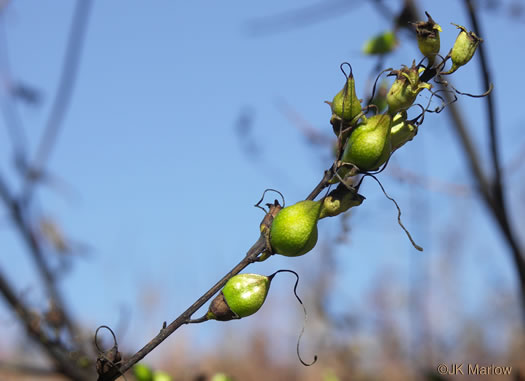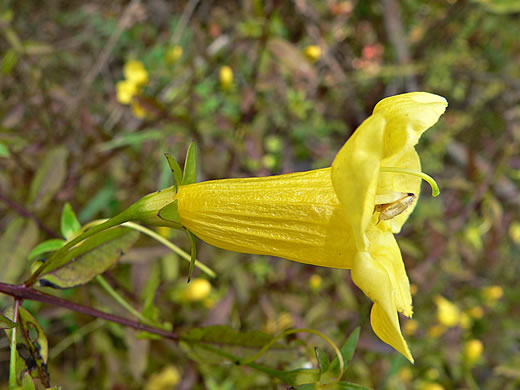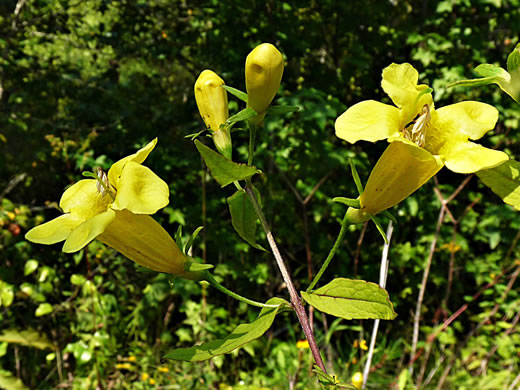Hovering over an image will enlarge it and point out features (works better on desktop than on mobile).
![]() A camera indicates there are pictures.
A camera indicates there are pictures.
![]() A speaker indicates that a botanical name is pronounced.
A speaker indicates that a botanical name is pronounced.
![]() A plus sign after a Latin name indicates that the species is further divided into varieties or subspecies.
A plus sign after a Latin name indicates that the species is further divided into varieties or subspecies.
Most habitat and range descriptions were obtained from Weakley's Flora.
Your search found 6 taxa.
Clicking ![]() one takes you to more information and/or pictures.
one takes you to more information and/or pictures.

Common Name: Fernleaf False Foxglove, Annual Oak-leach, Fernleaf Yellow False Foxglove
Weakley's Flora: (4/24/22) Aureolaria pedicularia FAMILY: Orobanchaceae
INCLUDING PLANTS National Database: Aureolaria pedicularia + FAMILY: Scrophulariaceae
SYNONYMOUS WITH Vascular Flora of the Carolinas (Radford, Ahles, & Bell, 1968): Aureolaria pedicularia 166-24-001 FAMILY: Scrophulariaceae
Habitat: Oak forests and woodlands, hemiparasitic on oaks and heaths
Common in Carolinas, rare in GA
Native to the Carolinas & Georgia

![]() Common Name:
Southern Oak-leach, Sticky False Foxglove, Combleaf Yellow False Foxglove
Common Name:
Southern Oak-leach, Sticky False Foxglove, Combleaf Yellow False Foxglove
Weakley's Flora: (4/24/22) Aureolaria pectinata FAMILY: Orobanchaceae
SYNONYMOUS WITH PLANTS National Database: Aureolaria pectinata FAMILY: Scrophulariaceae
SYNONYMOUS WITH Vascular Flora of the Carolinas (Radford, Ahles, & Bell, 1968): Aureolaria pectinata 166-24-002 FAMILY: Scrophulariaceae
Habitat: Turkey oak sandhills, Florida scrub, other dry oak forests and woodlands, barrens
Common in GA & SC (uncommon in NC)
Native to the Carolinas & Georgia

![]()
![]() Common Name:
Downy False Foxglove, Downy Oak-leach, Virginia Oak-leach, Downy Yellow False Foxglove
Common Name:
Downy False Foxglove, Downy Oak-leach, Virginia Oak-leach, Downy Yellow False Foxglove
Weakley's Flora: (4/24/22) Aureolaria virginica FAMILY: Orobanchaceae
SYNONYMOUS WITH PLANTS National Database: Aureolaria virginica FAMILY: Scrophulariaceae
SYNONYMOUS WITH Vascular Flora of the Carolinas (Radford, Ahles, & Bell, 1968): Aureolaria virginica 166-24-003 FAMILY: Scrophulariaceae
Habitat: Oak forests and woodlands, hemiparasitic on Quercus subgenus Quercus
Common
Native to the Carolinas & Georgia

![]()
![]() Common Name:
Appalachian Oak-leach, Smooth False Foxglove, Entireleaf Yellow False Foxglove
Common Name:
Appalachian Oak-leach, Smooth False Foxglove, Entireleaf Yellow False Foxglove
Weakley's Flora: (4/24/22) Aureolaria levigata FAMILY: Orobanchaceae
SYNONYMOUS WITH (ORTHOGRAPHIC VARIANT) PLANTS National Database: Aureolaria laevigata FAMILY: Scrophulariaceae
SYNONYMOUS WITH (ORTHOGRAPHIC VARIANT) Vascular Flora of the Carolinas (Radford, Ahles, & Bell, 1968): Aureolaria laevigata 166-24-004 FAMILY: Scrophulariaceae
Habitat: Oak forests and woodlands
Common in Mountains, uncommon in Piedmont, rare in Coastal Plain
Native to the Carolinas & Georgia

![]()
![]() Common Name:
Smooth False Foxglove, Smooth Oak-leach, Smooth Yellow False Foxglove
Common Name:
Smooth False Foxglove, Smooth Oak-leach, Smooth Yellow False Foxglove
Weakley's Flora: (4/14/23) Aureolaria flava FAMILY: Orobanchaceae
INCLUDING & INCLUDED WITHIN PLANTS National Database: Aureolaria flava var. flava FAMILY: Scrophulariaceae
SYNONYMOUS WITH Vascular Flora of the Carolinas (Radford, Ahles, & Bell, 1968): Aureolaria flava 166-24-005 FAMILY: Scrophulariaceae
Habitat: Oak forests and woodlands, hemiparasitic on Quercus subgenus Quercus
Common in Mountains, common in Piedmont of GA & SC (uncommon elsewhere in GA-NC-SC)
Native to the Carolinas & Georgia

![]() Common Name:
Cumberland Oak-leach, Spreading Yellow False Foxglove
Common Name:
Cumberland Oak-leach, Spreading Yellow False Foxglove
Weakley's Flora: (4/24/22) Aureolaria patula FAMILY: Orobanchaceae
SYNONYMOUS WITH PLANTS National Database: Aureolaria patula FAMILY: Scrophulariaceae
Habitat: Calcareous ledges, and bluffs, rich alluvial forests
Rare
Native to Georgia
Your search found 6 taxa. You are on page PAGE 1 out of 1 pages.


